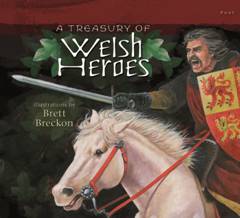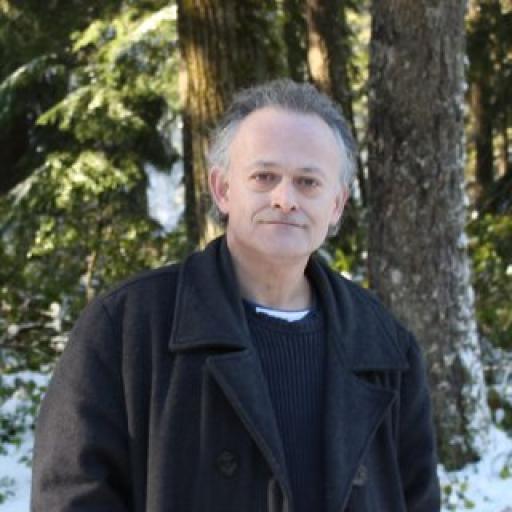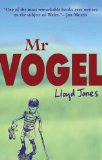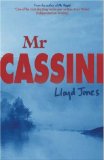Left Coast Eisteddfod Short Story Competition Will be Judged by Lloyd Jones!
By Ceri Shaw, 2009-01-14
We are immensely proud and pleased to announce that author Lloyd Jones will judge the entries in the Left Coast Eisteddfod Short Story competition. First prize in this competition wiil be $100 (65GBP approx ). Second and third place prizes to be announced soon. The final submission date for entries is July 31st 2009. To submit your entry please go to this page and read the rules carefully before entering:- Left Coast Eisteddfod Short Story Competition Submission Group . The competition is open to non-Americymru members but the submission procedure is slightly different.
Lloyd will need no introduction to most of our readers but just in case here are a few links:-
Interview With Lloyd Jones on Americymru
Review of "My First Colouring Book" on Americymru
| | | |
.
Follow the whole nine yards here (a 95 part series) :- Half Marathon Blog
Why I am running:- West Coast Eisteddfod Bryn Seion Church
For details of how to sponsor see this post
.
OK so I'm gonna be super lazy tonight BUT this really doesn't need any commentary. My next running challenge
.
.
.
'Nuff said.
.
From the page:- " Featuring the Haunted Lantern Room of Plas Mawr, the Spooky Rooms of Nanteos Mansion, and the Ghost of the Raglan Castle Library ."
The article can be found here:- Great Welsh Hauntings .
It includes this YouTube video:-
More of this type of stuff can be found HERE .
.
A book to stir the blood and stimulate the imagination
 Wales undoubtedly has a rich history of both heroes and heroines who are hailed in the tales and legends of Wales. Ten of the most prominent characters are celebrated in the latest publication by Pont Books , A Treasury of Welsh Heroes
Wales undoubtedly has a rich history of both heroes and heroines who are hailed in the tales and legends of Wales. Ten of the most prominent characters are celebrated in the latest publication by Pont Books , A Treasury of Welsh Heroes
Between the covers you will find saints and kings, lovers and lawmakers, poets and princes, rogues and warriors but who will be your favourite? Will you be taken with Prince Llywelyns bravery? Will you be enchanted by Princess Nests beauty? Or will daring Twm Sin Cati capture your imagination? Whoever is your favourite hero from the history of Wales, youre sure to find a story to tempt you amongst the variety of heroes featured in this publication.
Based on Trysorfa Arwyr Cymru , an original work by Tudur Dylan Jones, the approach to each hero is different: some are reported from the viewpoint of a young bystander; some are autobiographical and some are more poetic.
Not only does the book tell the tale of some of our most famous heroes, such as Llywelyn Our Last Prince and Owain Glyndr, but we also learn more about heroes such as Princess Nest, who are, perhaps, lesser known. The publication could also be regarded as a journey through the centuries and also a journey through Wales beginning with the story of Saint David through to the legend of Guto Nyth Brn.
Between the covers of this lavish volume, Brett Breckons breathtaking artwork brings the characters to life in front of your eyes. His detailed artwork combines historical accuracy with his noted flare for drama and design. Art has always been a passion for Brett At a very young age, art kind of grabbed me, and hasnt really let go since. I somehow felt certain that Id become an illustrator, and now it is almost impossible for me to imagine doing anything else.
The illustrator from Roch near Haverfordwest, can often be found in one of three places - on the beach with his surfboard, paddling his kayak or in his studio quietly painting.
A Treasury of Welsh Heroes is available to buy from all good bookshops and online retailers.
We should remember, first of all, that crwth, which literally means protuberance or a swelling out , and probably refers to the rather hunch-backed appearance of both the most recent instrument and most of its forebears, denoted several different small, hand-held lyres that were used in western Britain at least as far back as the early eleventh century. The modern crwth, meaning the most recent instrument so designated, was one of the last of the bowed yoke lyres. That large and diverse species seems to have emerged around A.D. 900, when the bow crossed over both the Bosporus and the Straits of Gibraltar, entered Europe in a sort of pincers movement, and was applied to pre-existing European lyres that previously were plucked. It’s important to keep in mind that bowed instruments did not emerge along a single line, and that, in particular, the viol and violin did NOT emerge from the crwth and similar lyres when the yoke of the lyre was removed and the sides were incurved to facilitate bowing. Independent fingerboard lyres (that is, those with fingerboards but no yokes), including those with sides incurved for acoustic reasons, were developed as plucked instruments in the Middle East, perhaps as far back as around 3000 BC. One school of thought treats them as an entirely separate family from the lyres, calling them collectively the lute family. They, too, crossed over into Europe during the first millennium of the Common Era and later had the bow applied to them. It is from those that the viol and violin emerged. Unlike the viol and violin and their larger relatives such as the viol da gamba, violoncello, lyra da braccio, and double-bass viol, whose designs became standardized, the bowed lyres existed in many different forms in various regions of Europe and were used as instruments of the minstrels until the end of minstrelsy shortly after the close of the Middle Ages. After that, they were absorbed into the various local folk cultures, where a few of them survived in practice until fairly recent times. The Scandinavian talharpa , for example, could still be found in use as late as the early twentieth century, although it appears to have emerged prior to the advent of the modern crwth.
The modern crwth seems to have sprung from at least one and perhaps multiple closely related immediate prototypes within the Welsh folk culture, probably around 1500. It thrived there as a fiddle used at country dances and in some cases by ballad singers (the “newspapers” of the time and place) until around 1730. It seems to have been played most often as a solo instrument but on occasion in ensemble with the harp ( telyn ) and hornpipe ( pibgorn ). The crwth and pibgorn, along with dancing, were victims of the rise of the evangelical Protestantism, specifically Calvinistic Methodism, that swept Wales, much like the Great Awakening in America, in the 1730s and ‘40s. Large numbers of those instruments, along with decks of playing cards and other so-called implements of the Devil, were destroyed in what can be described most accurately as a mad orgy of religious fervor. The harp, due to its academic associations, suffered much less. The crwth and pibgorn survived, albeit in much smaller and diminishing numbers, in some remote locations for about a century beyond that time. According to oral tradition, the last of the old crythorion , one James Green of Bron y Garth, died in 1855.
With the establishment of musicology as a recognized discipline, initially under the leadership of German scholars, in the early twentieth century, came an interest beyond the dilettante level in old music and old instruments, including the crwth. Unfortunately, many of the early investigators were less than careful in their treatment of instruments outside the academic mainstream, and it was at that time that many erroneous notions regarding the crwth arose, including the view, representing misapplication of Darwinian biological theory, that the violin emerged when the yoke arms were removed from the crwth and the sides were incurved. Also prominent were romanticized, utterly unsupportable notions such as that of the crwth’s having been played at Stonehenge and elsewhere by the Druids. Still another error was that of superimposing academic performance technique, primarily that of the viol, onto the playing of the crwth. Much of the research since then, including mine, has been devoted to debunking earlier views and approaching the crwth and other folk music phenomena from within the native cultures as much as possible, not from some far-removed point in the academic mainstream.
4. How would you describe its sound?
"In brief, the sound is something of a cross between a fiddle and a bagpipe, especially when the tuning in paired fifths is employed. A tuning in paired seconds is still mistakenly regarded as standard. Initially it was reported by only one writer, Edward Jones, in his Musical and Poetical Relicks [sic] of the Welsh Bards , and then subsequent writers picked up on that and passed it along unquestioningly. The tuning in paired seconds is practical for playing chords, but very impractical for the playing of melodies. The tuning in fifths, with a dominant between the two roots or keynotes, has numerous precedents and parallels in the history of European string instruments, and turns the crwth from a dull, droning instrument into a reasonably nimble melodic executant with the ability to support its own melodies harmonically – in essence, a self-contained string ensemble. The tuning that I use is based on William Bingley’s report in A Tour Round North Wales . While Bingley almost certainly was in error in reporting the height to which the highest string was tuned, I suspect that he was more generally correct in reporting a tuning in paired fifths (for example G-g-D-d for the strings over the fingerboard). That is very similar to George Emerson’s report of the Scottish fiddle tuning G-D-g-d ( Rantin’ Pipe and Tremblin’ String ), a tuning that also used to be common among the old-time fiddlers here in America, especially in Appalachia, where chordal playing made possible by nearly flat bridges was once very common. Tuning in paired fifths, incidentally, differs from standard violin tuning in that the latter is in consecutive fifths (G-D-a-e) to facilitate mainly melodic playing.
5. Were you a violin or other stringed instrument player prior to discovering the crwth?
"Yes, I was a violinist. I still am, and one of my favorite activities is directing a group of youngsters in a string orchestra program. I’ve played my crwth with their chamber ensemble, or top group, on occasion, using my arrangements of traditional dance tunes, and we’ve all had a great time with that."
6. Was it difficult to move from the violin to the crwth? How different is playing the crwth, and how is it different?
"Yes and no, with regard to difficulty. At the time I was reconstructing crwth performance methodology, I had been away from the violin for over a year, so the shock was minimal. The biggest adjustment was learning to apply a lot more pressure to the crwth bow. A bow drawn across the strings at an oblique angle, rather than at a right angle as on the violin, will “ice skate” out of control, and also produce a thin sound, if it’s not pressed firmly. Pressing it firmly, of course, produces a tone that’s totally taboo on the violin – namely, a lot of upper partials and plain, old squeaks. That sound, however, was prized among crythorion . There’s an old Welsh adage that states in translation, “Let him who plays his crwth sweetly be hanged!” I have found going from crwth back to violin more of a challenge than going from violin to crwth. It’s easier to go after an instrument somewhat aggressively, as one must do with the crwth, than to approach it with the care, restraint, and meticulous finesse that one must use in playing the violin. I suspect the adjustment would be not quite so marked, at least in terms of right-hand technique, if I were a double-bass player."
7. How widespread is the crwth today? Are you aware of other crwth players, groups or crwth makers?
"I would say that it is more widespread now than it was when I began my research. More importantly, it is now more often viewed and played as the non-academic, folk instrument than it was, as opposed to the prevailing pre-1970s methods that were based on academic technique. Certainly the crwth, along with the bagpipe, penny whistle, and other traditional Celtic instruments, has benefitted from the enormous, almost exponential, explosion of serious, disciplined scholarly interest in, as well as the increased general popularity of, traditional Celtic music over the last thirty years or so. I have seen crwths advertised in a number of catalogs, including that of Lark in the Morning. I know that there are a number of makers both in the U.S. and the U.K. Anyone interested in obtaining one should have no trouble locating a maker on the Internet. Since I have my own, I have made no inquiries myself. Anybody interested in making an historically correct crwth of his or her own might find handy the appendix of my thesis, which includes detailed descriptions and diagrams of known originals and copies."
"That question makes me think that I need to write a tutorial on the subject. At the risk of sounding dreadfully conceited, which I’m really not, I’d suggest my thesis. I can provide copies, at production and mailing cost, to those who are interested. It does not include a tutorial on playing the crwth, but it goes into more detail than any earlier document that I know of in describing what appears to have been playing methodology. A summary of that can be found in my online abstract of “Some Observations Regarding Crwth Performance,” the URL of which is:-
http://home.earthlink.net/~llywarch/cth03.html
I also would be happy to answer questions in e-mail, as in fact I’ve done on occasion over the years ( llywarch@earthlink.net saves the trouble of writing via Americymru). If there appears to be enough interest, I can eventually post some information online, but of course that cannot be done overnight. Having said all that, I should stress that the crwth has not been the focus of my musicological activity for over twenty years. During that time there may have been written one or more tutorials that are based on reliable investigations and that avoid advocating academic technique such as one would use with the viol or violin.As far as previous knowledge and skills are concerned, a background in playing strings is helpful, especially an understanding of how whole steps involve spaces between the fingers while half-steps do not, if one is a violinist or violist. If one is using the diagonal cross-torso hold that I prefer (holding it up like a violin makes working the drones very difficult), a background as a cellist could be useful, except that the distances between the points of contact on the strings are smaller. Probably the biggest problem regarding left-hand technique is that of extending the thumb sideways and plucking the drones. That gives the entire hand sort of a claw-like character that is totally alien to orchestral string playing. The thumb rests against the side of the instrument’s neck on the violin and viola, and it rests on the back of the neck of the cello or double-bass.Anyone seeking tutelage from any crwth player needs to find someone who is knowledgeable of the crwth’s history in performance, and particularly someone who does not treat it like an academic instrument. In other words, run for your life from anyone who teaches the crwth as merely the less agile cousin of the violin or viol!"
If so heres one set in Wales. Every expense is spared in this hilarious gore-fest set on a remote Welsh island. The cast comes complete with a family of rural reprobates vaguely reminiscent of the cannibalistic miscreants in "Wrong Turn". There is also a glorious scene in which a combine harvester is used to deadly effect as a weapon against the marauding aliens and yes, ....they do use the famous Wurzels tune as a musical accompaniment.From the film's website:-"Scalleum is a remote farming island off the north coast of Wales, only accessible at low tide via a causeway know as the "Devils Spine". The island is also home to an ancient stone circle known as the "Devils Teeth". This provides the sinister setting for the terrifying Alien abduction of local farm girl Cat Williams and her hitchhiker boyfriend Angelo Jones.".... more Whilst this movie is not a defining moment in the development of contemporary Welsh culture it should succeed in raising a chuckle or a guffaw.
.
Follow the whole nine yards here (a 95 part series) :- Half Marathon Blog
Why I am running:- West Coast Eisteddfod Bryn Seion Church
For details of how to sponsor see this post
.
My daps finally gave up the ghost today. One is split at the toes and the other is split at the heels. Guess I'm going to have to invest in new footwear soon. Meanwhile I was reminded of a typically helpful remark by our top commenter Swansea Jack ( he loses a buck for every day he misses ) who suggested some time ago that I consider running barefoot. I decided to investigate
It seemed to me that the risk of stepping on broken glass or rocks and gravel whilst running barefoot far outweighed any advantage that might accrue from the more natural stride that this practice supposedly encourages. But...lo and behold....I came across this article about barefoot running shoes !!:-
The running life: New things, like barefoot running, worth trying
Now perhaps I am missing something here. It might seem natural to suppose that barefoot running would involve running with no shoes on. But apparently not. What it actually means is that you run in bizarre daps with individual toe spaces buit in. There is a pic in the article linked above.
Another article I found lauds the benefits of running in 'barefoot sneakers':-
Has anybody tried this? Should I?
.
A musical theatre superstar, a classical singer also known for his star role in a TV advert, a world-famous music conductor and an opera sensation are among the artists set to perform at the 2012 Llangollen International Eisteddfod.
The 2012 line-up features music favourites Alfie Boe, Wynne Evans, Karl Jenkins and Lesley Garrett among its highlights. Instrumentalists Alison Balsom and Nicola Benedetti, The Royal Philharmonic Orchestra, soprano Fflur Wyn, opera star Mark Llywelyn Evans and Cr CF1 have also been confirmed to perform at the Eisteddfod.
The announcement came at a press conference at Llangollen Pavilion on Wednesday 16 November by new Music Director Eilir Owen Griffiths. Tickets for the concerts will be released on general sale from Monday 5 December at the Box Office and online.
Wynne Evans was also at the launch and gave the press a sneak preview of whats to come at the 2012 Grand Finale concert with a specially written song about Llangollen to the tune of the Go Compare adverts.
The tenor from Carmarthen says,The Llangollen International Eisteddfod has such a rich tradition and is well supported by locals and visitors from four corners of the world. Its an honour to be invited to perform on such an iconic stage for the first time in front of an international audience. I am ashamed to say I only visited the Eisteddfod for the first time last year and I was amazed by the broad spectrum of musical styles and cultures there. I can honestly say there is something for everyone. As soon as I felt the atmosphere in the pavilion it became my ambition to sing there and now I am delighted to be headlining the final night concert. The line-up for 2012 looks fantastic and Im sure the demand for tickets will be as high as ever.
Music Director Eilir adds,2012 is an exciting year for Llangollen International Eisteddfod. Weve managed to attract an exciting mix of accomplished artists and instrumentalists to complete an attractive Concert Series. This year also sees the launch of The LIME Festival Chorus and The LIME Orchestra as well as the brand new All Singing, All Dancing Showchoirs competition, which Im personally looking forward to.
Annual favourites including the fantastic International Competitors, Childrens Day, Folk Friday and the inaugural and internationally renowned Choir of the World finale all return. We certainly have got something for everyone. And personally, Im looking forward to the challenges that my first year in the role will bring.
The 2012 Llangollen International Eisteddfod kicks off on Tuesday 3 July with the annual Parade of Nations through Llangollen town centre. Later that evening, competitors from across the globe will perform at the One World, One Stage, One Llangollen Welcome concert (7.30pm).
Classical Brit award winner and trumpeter Alison Balsom, soprano Lesley Garrett and violinist Nicola Benedetti will perform with The Royal Philharmonic Orchestra at the Queens Diamond Jubilee Concert on Wednesday 4 July (8.00pm).
Lesley Garrett explains,Llangollen Eisteddfod is an amazing festival that brings many genres of music together. This is a cultural festival with great longevity and a fabulous history. Some of the worlds best singers have headlined here over the past 65 years. Im also looking forward to performing at Llangollen again and sharing the stage with the fantastic Alison Balsom and Nicola Benedetti. They are wonderful instrumentalists and performers.
Broadway and West End star Alfie Boe best known for his role as Jean Valijean in Les Misrables makes his first appearance at Llangollen on 5 July to launch the All Singing, All Dancing Showchoirs competition (7.30pm).
Alfie Boe says,Llangollen International Musical Eisteddfod has played host to a great number of international singers and performers in the past and Im thrilled to be able to follow in their footsteps. Its also exciting for me to launch the 2012 Show Choir competition and as Wales is traditionally known as Land of the Song Im sure the standard will be high.
The winner of the Cardiff Singer of the World 2011, Valentina Nafornita, is the special guest singer during Karl Jenkins The Peacemakers on Friday 6 July (8.00pm). Swansea-born Jenkins returns to the Eisteddfod having led concerts in 2010.He was also Day President at the 2009 Eisteddfod.
On Saturday 7 July, the weeks competitions come to a head in the spectacular Choir of the World finale (8.00pm).
Brothers Wynne and Mark Evans lead an exciting musical extravaganza on 8 July as they perform at the Grand Finale (7.30pm). The classical singers will be joined by opera singer Fflur Wyn, Cr CF1 and many more in closing the 2012 festival.






















